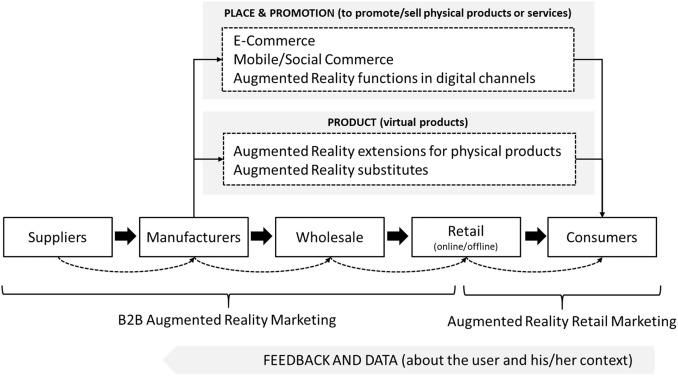The True Impact of Bite-Sized Learning: How to Measure Success adn Outcomes
Introduction: The Power of Bite-Sized Learning
In today’s fast-paced digital world, bite-sized learning—also known as microlearning—has revolutionized how individuals and organizations approach training and professional development. Whether accessed on smartphones, laptops, or tablets, microlearning offers rapid, easily digestible modules that cater to the attention spans and busy schedules of modern learners.
But as bite-sized learning becomes mainstream,a critical question arises: How do we measure its true impact and outcomes? This comprehensive guide explores the advantages of microlearning,practical tips for implementation,measurement strategies,and real-world case studies. if you’re seeking evidence-based methods to evaluate your eLearning strategy, read on for actionable insights.
Understanding Bite-Sized Learning: What Is It?
Bite-sized learning refers to educational content designed in short, focused bursts—typically lasting less than ten minutes. These modules can include videos, quizzes, infographics, audio clips, or interactive scenarios, making it easy for learners to consume details at their own pace and revisit topics as needed.
- Flexible accessibility: Learn anytime,anywhere.
- Targeted delivery: Focus on specific concepts and skills.
- Engagement: Prevent fatigue and maintain attention.
- Retention: Repetition and revisiting support deeper learning.
Main Benefits of Bite-Sized Learning
Microlearning offers a host of benefits that make it a preferred method for organizations investing in digital education. Here are the main advantages:
| Benefit | Description |
|---|---|
| Increased Engagement | Short modules keep learners active and motivated, leading to higher completion rates. |
| Better Retention | Regular bite-sized reviews reinforce memory, supporting spaced repetition for greater recall. |
| Cost Effectiveness | Reduced production and update costs compared to customary long-form courses. |
| Adaptability | Easy to update, modify, and personalize based on feedback or changing requirements. |
| faster Implementation | Quick to deploy across teams or departments globally. |
How to Measure the Success and Outcomes of Bite-Sized Learning
Evaluating the effectiveness of bite-sized learning is crucial to justify investment, enhance learner experience, and achieve educational goals. Here’s how to measure its true impact:
1. Define Clear Learning Objectives
- set specific, measurable goals for what learners should know or be able to do after each module.
- Align objectives with business or organizational outcomes.
2.Monitor Engagement Metrics
- completion Rates: Track how many learners finish each module.
- Time Spent: Analyze average time spent to spot bottlenecks or lack of interest.
- Repeat visits: Frequent returns can signal value and knowledge reinforcement.
3. Assess Knowledge Retention and Transfer
- Quizzes and assessments: Use pre- and post-module tests to gauge learning gains.
- Skill Submission: Observe whether learners apply new knowledge on the job.
4. Collect User Feedback
- Surveys: Gather opinions on content relevance, clarity, and usability.
- Open Comments: Solicit candid insights to uncover pain points or suggestions.
5. Evaluate Organizational Impact
- Connect improved performance, productivity, or safety to microlearning modules.
- Compare pre- and post-training metrics (KPIs) such as sales figures, error rates, or customer satisfaction scores.
6. LMS Analytics & Reporting
- Leverage Learning Management System (LMS) dashboards for in-depth tracking and visualization.
- Automate reporting to save time and ensure consistency.
Best Practices for Implementing Bite-Sized Learning
To maximize outcomes, consider these microlearning best practices:
- Keep modules focused: Limit to one or two key learning objectives per segment.
- Mix formats: Combine text, video, audio, and interactive elements for varied engagement.
- Mobile-first design: Ensure usability on smartphones and tablets.
- Enable self-paced progression: let learners control their pace and repeat lessons as needed.
- Embed real-world scenarios: Present practical applications learners can relate to.
- Regularly update content: Keep modules fresh and relevant.
Case Studies: The Real-World Impact of Microlearning
Case Study 1: Global Retail Solutions
A leading international retailer adopted bite-sized compliance training for its sales teams. By replacing hour-long webinars with five-minute interactive modules, the company reported:
- 82% faster orientation for new hires
- Completion rates improved from 61% to 97%
- Critically important decrease in compliance-related errors
Case Study 2: Healthcare Frontline Workers
A hospital introduced microlearning on safety protocols during the pandemic. Results included:
- Staff engagement tripled
- Short quizzes enabled instant feedback and remedial support
- Protocol adherence increased by 40%
Case Study 3: Tech Company Upskilling
A tech firm employed bite-sized coding tutorials in its eLearning platform. Employees reported:
- Reduced training fatigue
- Better retention and confidence in applying new programming languages
- Prompt skills transfer to live projects
First-Hand Experience: Learner Testimonials
Here’s what real participants have said about their microlearning journey:
- “I love being able to squeeze a lesson into a coffee break — it fits my schedule perfectly!”
- “Short video tips kept me engaged and helped me remember important details on the job.”
- “The quizzes show me exactly where I need to improve. It’s much more motivating than old-school courses.”
Practical Tips to Enhance Bite-Sized Learning Measurement
- Set baseline metrics: Track current performance to compare against post-training results.
- Involve learners early: Ask for feedback during pilot phases to refine content.
- use varied assessments: Combine quizzes, scenario-based tasks, and direct observation.
- Leverage technology: Automate data collection and analysis to make ongoing improvement seamless.
- Celebrate quick wins: Share early success stories to encourage adoption and investment.
Conclusion: Unlocking the Value of Bite-Sized Learning
Bite-sized learning isn’t just a trend—it’s a powerful,flexible way to boost knowledge retention,engagement,and real-world performance. By understanding and measuring its impact with clear objectives, robust tracking, and participant feedback, organizations can truly unlock the value of microlearning for teams and individuals.
Whether you’re an instructional designer, HR manager, or lifelong learner, integrating microlearning and applying these measurement strategies will help you ensure that training investment translates into meaningful results. Embrace the future of digital education—and let bite-sized learning drive your next wave of growth and success.

